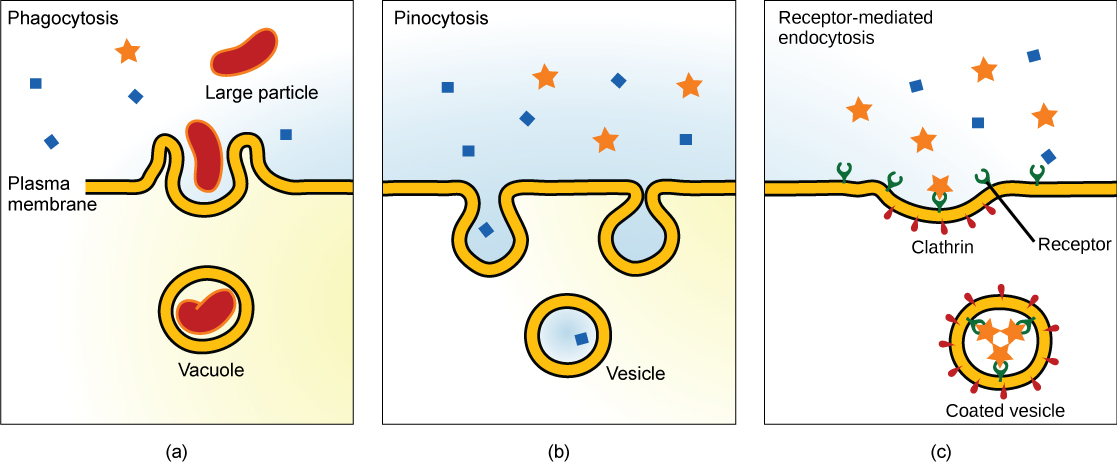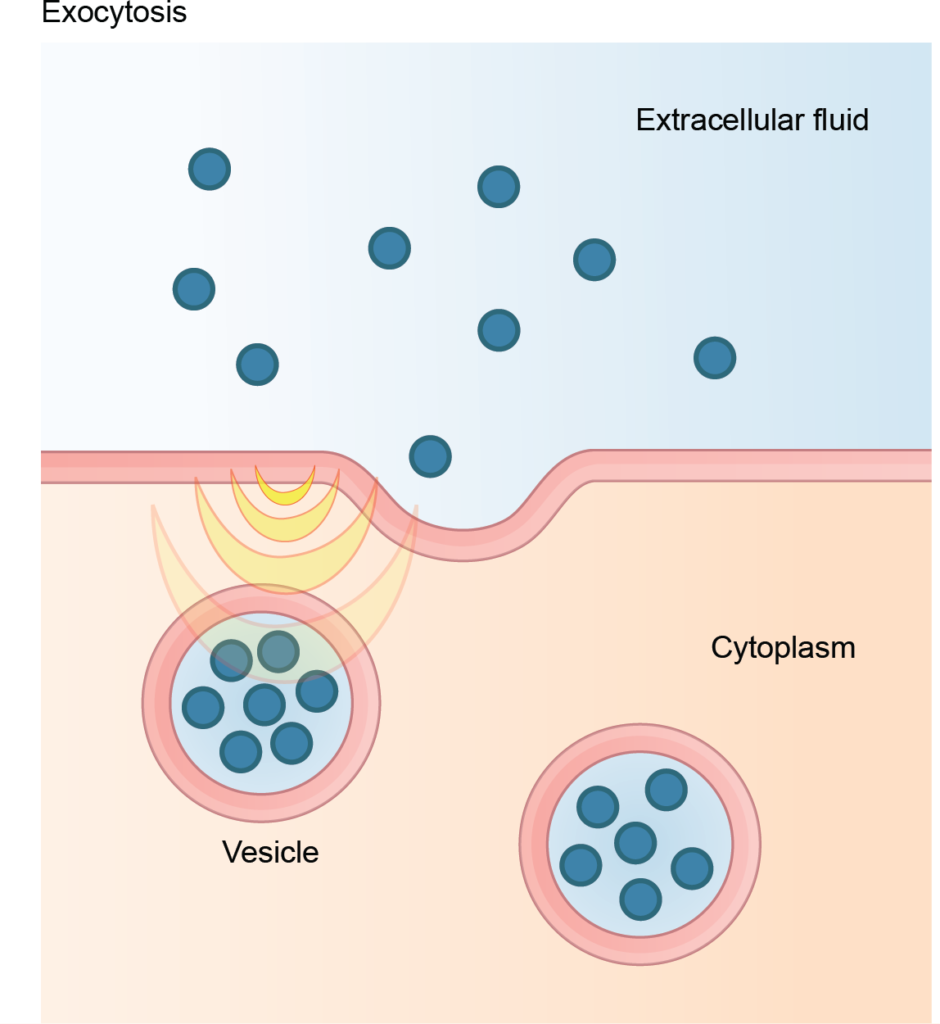Chapter 9: Cell Membrane and Transport Mechanisms
9.4. Bulk (or Vesicular) Transport
Learning Objectives
By the end of this section, you will be able to:
- Explain endocytosis, including phagocytosis, pinocytosis, and receptor-mediated endocytosis
- Explain the process of exocytosis
In addition to moving small ions and molecules through the membrane, cells also need to remove and take in larger molecules and particles. Some cells are even capable of engulfing entire unicellular microorganisms. You might have correctly hypothesized that when a cell uptakes and releases large particles, it requires energy (ATP). A large particle, however, cannot pass through the membrane, even with energy that the cell supplies.
Endocytosis
Endocytosis is a type of active transport that moves particles, such as large molecules, parts of cells, and even whole cells, into a cell. There are different variations of endocytosis, but all share a common characteristic: The plasma membrane of the cell invaginates, forming a pocket around the target particle. The pocket pinches off, resulting in the particle being contained in a newly created vacuole that is formed from the plasma membrane.

Phagocytosis is the process by which large particles, such as cells, are taken in by a cell. For example, when microorganisms invade the human body, a type of white blood cell called a neutrophil removes the invader through this process, surrounding and engulfing the microorganism, which is then destroyed by the neutrophil (Figure 9.4.1.(a)).
Pinocytosis “cell drinking”, is a misleading term. A cell is not purposefully taking in extracellular fluid. Instead, the process allows needed small soluble solutes to be taken in from the extracellular fluid (Figure 9.4.1.(b)).
Receptor-mediated endocytosis. Receptors are target-specific membrane proteins, binding only with select molecules. An extracellular substance, therefore, can only be taken into the cell if there is a receptor to recognizes it (Figure 9.4.1.(c)). Iron is transported into the cell using receptor-mediated endocytosis. If there is a defect in the receptor, the substance remains outside the cell to accumulate in tissue or blood. The most physiological relevant example of a receptor protein genetic defect relates to the resulting accumulation of ‘bad cholesterol’ in the blood which in turn is associated with an increased risk of cardiovascular disease.
Exocytosis
The reverse process of moving material into a cell is the process of exocytosis. Exocytosis is the opposite of the processes discussed above in that its purpose is to expel material from the cell into the extracellular fluid. A particle enveloped in membrane fuses with the interior of the plasma membrane. This fusion opens the membranous envelope to the exterior of the cell, and the particle is expelled into the extracellular space (Figure 9.4.2.).

License and attributions:
- Concepts of Biology, 2013, Fowler, S. et al. License: CC BY 4.0. Located at https://openstax.org/books/concepts-biology/pages/3-6-active-transport
- Biology, Second edition, 2018, Clark, M.A. et al. License: CC BY 4.0. Located at https://openstax.org/books/biology-2e/pages/5-4-bulk-transport
